Imagine a glorious May evening, around 6.30pm. You’ve arrived in a pretty coastal town, dumped your bags in a picturesque rooftop flat, and polished off an early meal with your yawning seven-year-old son. What happens next? Stroll down to the harbour for some ice cream? Watch a film and tuck in early? These are good, sensible ideas. But no. You are in Bergen, the city of seven mountains, down the road from the land of the midnight sun, and it’s already working its spell. Your head spins with the blazing sky, sleep feels a long way away, and Mount Fløyen, a 320-metre summit rising out of the harbour, beckons.
In Norway, gravity works in reverse. It’s not just Elsa, the fictional ice queen in Frozen, who feels more herself at altitude here. The land that inspired Disney’s blockbuster animation is 90% covered in mountains and, at every opportunity it seems, Norwegians head up them to ski, hike, cycle, camp, race, celebrate and socialise. There’s even a mountain film festival.
Bergen, the nation’s second-largest city, is nonetheless unique in combining the cultural clout of a 275,000-strong population with such extreme proximity to mountains. It’s a charming place to stroll around, all trams, hilly cobbled streets and a lot of waterfront, with the wild call of the mountains at every turn. And being just a couple of hours from Gatwick, it’s perfect for an outdoor weekend break with a dash of culture thrown in.
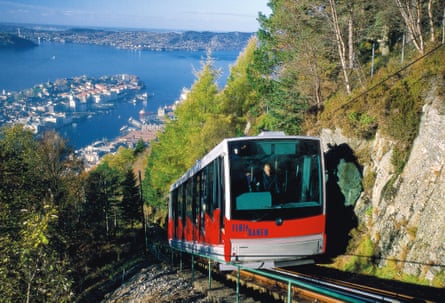
A funicular runs from town up to the top of Fløyen and we jump on halfway up. With an incline of up to 27 degrees, it takes only a few thrilling minutes to chug to the summit. There’s a strange, calm energy in the air, magnified by the strong light. Wooded bark paths extend in every direction, with loops for all walking abilities. We choose a short one leading to a pond, where we have a quick dip in the gritty water. On the way back, my son discovers little side paths, stones, moss, old logs. His step quickens. “I love this,” he says. “I really love this.”
By now we are fully in Bergen’s grip and decide to join our friends on the waterfront. By the time we find them, it’s 10pm and the sun is still too bright to look at. It infuses a kind of madness, a feeling that anything is possible. And, at the USF Verftet (United Sardine Factory Art Centre), it kind of is: 12,000 square metres of space for making, teaching, exhibiting and performing a variety of arts, right on the edge of the Atlantic ocean.
We refuel with burgers at USF Kafe Kippers, an informal but stylish venue with lots of space on the quay, and it’s another hour before something that can be described as dusk falls and we amble home.
The next morning, inspired by the ease of summiting Fløyen, we join our friends again to ascend Ulriken, a 643-metre hulk of rock three miles from the centre. It’s sensationally hot, and there is no shade – the tree line is soon below us, giving way to crumbly, exposed rock with low vegetation clinging on in deep ravines.
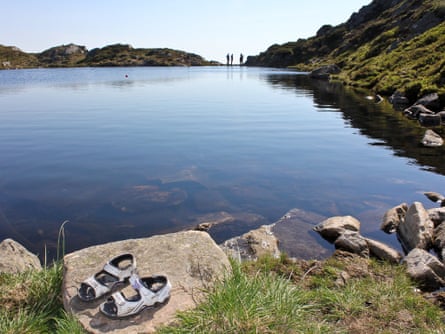
From the corner of my eye I spy the cable car, gliding majestically against the cloudless sky towards the summit restaurant. That’s the easy way up. But the real magic is down here. As we settle into the routine of the strenuous climb, the children grow ever more silent, sweaty and feral, drinking spring water and climbing like small goats along their own, intricate paths.
The rewards for going on foot are: smugness, aching legs and wide grins. But Ulriken, the “south tower” of the Bergen massif, offers its main prize to everyone: the view is stunning, a panorama of distant snow-covered peaks and the city tucked into its fjord, enhanced by paragliders, abseilers and cyclists. Fortified by ice lollies we explore the grassy paths that lead inland from the summit. The massif east of Bergen offers a great many trail combinations, of which the five-hour Vidden hike back to Fløyen is probably the most famous. Norwegian language website ut.no gives details of trails across the country.
But there’s no need for further exertion. In less than 10 minutes we arrive at a natural infinity pool, precariously held from a steep drop by a mere few metres of rock. As the children settle for throwing pebbles, I lower myself into its chilly embrace. The water is dark, and swimming to the middle is disorienting. I know I’ll swim back in just a moment to begin the journey back down to town but, for now, if only for this second and the next, I want to stay here on the mountain. I am captured.
Discover the World (01737 214250, discover-the-world.co.uk) offers a three-night break in Bergen, including B&B accommodation in the Hotel Augustin near the historic Bryggen quarter and flights from Gatwick or Manchester, from £446pp
The Frozen effect
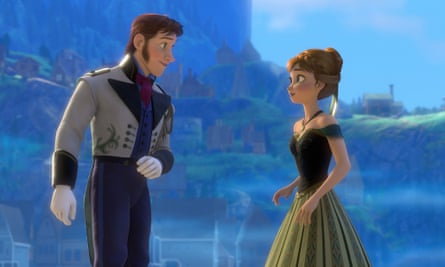
Hans Christian Andersen’s original Snow Queen may have roamed far and wide across the Scandinavian peninsula, but for Disney’s interpretation of the fairytale, Frozen, Norway’s rich visual landscape provided more than enough inspiration for the travels of Anna (pictured above with Prince Hans) and her sister, Elsa.
From the southern port of Arendal (recreated as Arendelle in the film) to the drama of the Northern Lights, which appear in the Ice workers scene which opens the movie, the filmmakers drew from over 1,000 miles of dramatic Norwegian landscape.
A remarkable number of the film’s features, however, can be experienced in or near Bergen. You can’t miss Bryggen, the colourful Unesco world heritage-listed cluster of timber buildings on the quayside to the east of town that feature so prominently and prettily in Arendelle.
You’ll also see traditional medieval wooden stave churches with their distinctive stone and wood architecture in the film, and the nearest one to Bergen in real life is at Fantoft Stavkirke, 6km from the town centre by tram or bus (running 15 May-15 Sept).
Nærøyfjord, an arm of the more than 200km long Unesco-listed Sognefjord, is Disney’s cited source for the fjord of Arendelle, while the blue shadowed glacial landscape across which Elsa flees resembles the Folgefonna glacier. Norway Active (norwayactive.no) and Fjord Tours (norwaynutshell.no) offer a range of tours of the area, including guided day trips, as well as activities ranging from hiking to cycling, and self-guided itineraries.
And, of course, Disney (adventuresbydisney.com) has created its own – wildly expensive – tour, a seven-day trip to Bergen and around, with river rafting and folk-dancing lessons, for a cool $5,099 per adult, $4,849 per child, excluding flights.
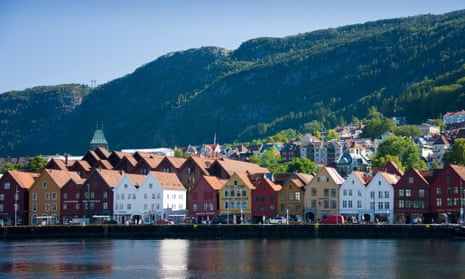


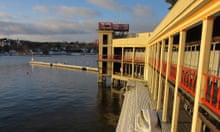

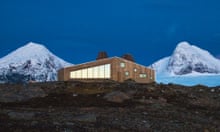

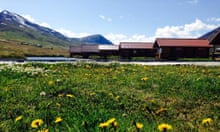
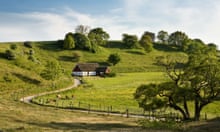


Comments (…)
Sign in or create your Guardian account to join the discussion